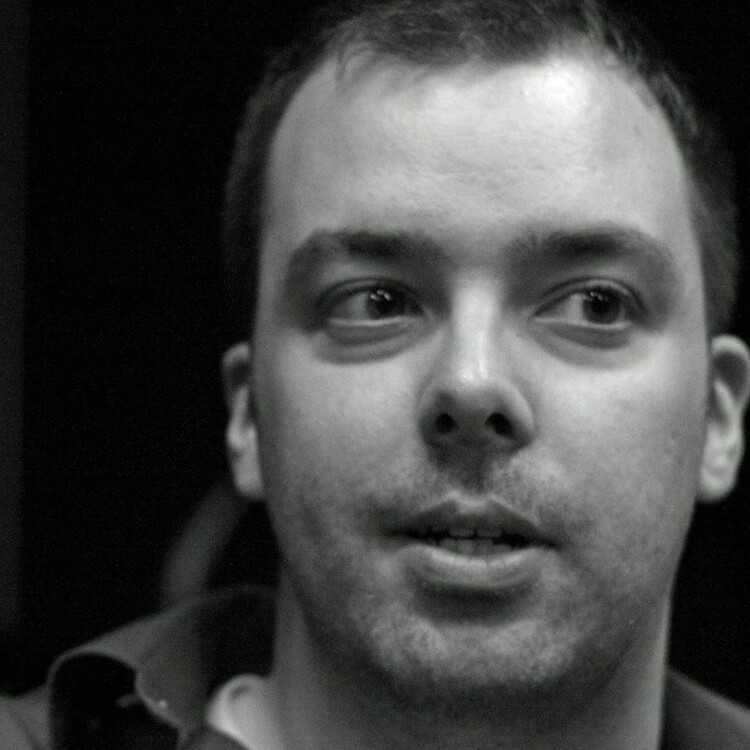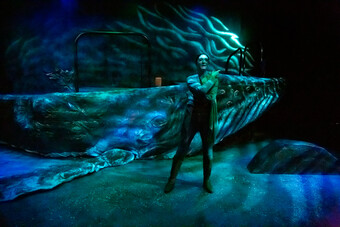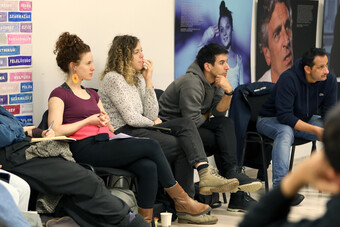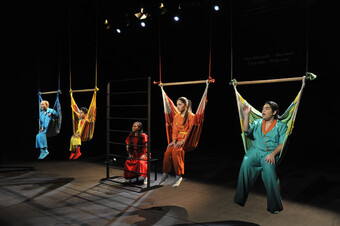A Dialectic in Ferguson
This year at Tesseract Theatre, we wanted to start devising a piece with our ensemble that wouldn’t premiere until fall of 2016. I had planned on not narrowing down the subject matter of the piece for at least the first three or four months, wanting the younger acting artists we were working with to slowly realize what they had in common, take the time to share their experiences, and sift through their commonalities to discover something important they wanted to spend two years exploring. A month before we were planning to meet for the first time, a tragedy occurred in Ferguson, Missouri and the national spotlight became intensely focused on a harrowing problem embedded in many St. Louis communities.
The question of artistic response to the events in Ferguson is now being discussed in many ways in many different places. A great deal of St. Louis and visiting national artists have started a dialogue and are putting some tremendous things in motion; for example, Left Bank Books hosting a Ferguson book reading group or The Ready Room hosting a benefit concert called “Bands Up, Don’t Shoot.” Seeing a community of artists come together is a wonderful thing, even if the catalyst is something awful. Hearing the stories from several young actors who are involved with Tesseract Theatre, we felt starting a process of creation was the right thing to do.
I interviewed four acting artists who were involved with events in Ferguson over the last couple of weeks: Jarris Williams, a nineteen-year-old student and actor who grew up in Ferguson; Laurell Stevenson, a twenty-one-year-old student and actress from Florissant, attending St. Louis Community College in Ferguson; Sean Green, a local actor who performs science-based theater shows for Ferguson and children; and Brenna Whitehurst, a twenty-year-old Florissant resident and Webster University Student. They were asked to comment on their raw emotions of what they saw and how they want to see things progress from here. They weren’t asked to try to understand an issue from both sides, or try to capture the events of Ferguson in a handful of words. At this stage of our process (and to steal a term I picked up from Art Borreca who taught this summer at The Playwright’s Lab at Hollins University), we are dramaturging the dialectic. These artists are investigating their thoughts.
What was the most powerful image from your experience in Ferguson?
Jarris: On the second Sunday, I was tear-gassed. I’m behind a huge group of people who are moving forward again, while the tear-gas canisters are being shot, all I see is the backs of all these people’s heads and one, two, three, four, five tear-gas canisters are flying over the crowd and landing all around me. And that image represents America now. It shouldn’t, but it does.
Laurell: People holding signs and chanting, riding on top of cars and I remember the feeling of closeness that I’ve never felt amongst the African American community. And that’s what made me come back over and over again. I saw mothers and fathers, sisters and brothers, kids as young as two and newborns. All there, fighting in what they believed in or having something in life worth fighting for.
What was your response to media in Ferguson during the protests?
Sean: When something happens over seas, we love the flow of information. We trust the information. But now we are finding out how much we heard from certain sources was false. The suddenness of being under the gaze of a national spotlight. And the divide between the narrative of social media and mainstream narrative was intense. There’s something to investigate in that divide.
Jarris: The media has been the best part of the entire movement. I hate that word, “movement,” but I’m using it. Complex news was here— really great guys. Vice. Wall Street Journal. Norwegian news people. Independent guys from the Bronx. Some people from Russia. And they have been the most involved. But you turn to local news on TV or radio, the reporters are just talking to each other, taking what the police are reporting and that’s that. Why does it take the national news to capture what the people are saying, but the local news, the people we grew up watching, are telling lies to me?
How important is it to see the community’s voice represented in artistic work?
Brenna: It’s very important. I work at Gene Slay’s (Boys’ Club of St. Louis). We help inner city kids to have something to do after school. I think anytime you have the ability to have your feelings expressed, it helps a community. And the state doesn’t put enough money into art in general, or make sure every kid has the option to paint and be involved in any artistic medium early on. And the protests I’ve been a part of, which were the more peaceful ones near the Ferguson police department on Florissant Road, people were finally having access to a way of expressing their feelings together as a community.
Laurell: People live in a bubble where they believe everything they’re told and everything they read on the Internet. It’s sad to say, but that’s the world we live in today. If it’s on the Internet, it must be true. After seeing the chop job the media did in this situation, I’ll always be fighting for my voice to be heard. That’s why we need more eyewitness accounts. People saying I was there. I saw everything. I know the truth. And that’ll be me. Telling the truth.
What does “hands up, don’t shoot” mean to you?
Jarris: Just look innocent. And it’s really hard to look innocent, because I look guilty everyday. Just on account of who and what I am.










Comments
The article is just the start of the conversation—we want to know what you think about this subject, too! HowlRound is a space for knowledge-sharing, and we welcome spirited, thoughtful, and on-topic dialogue. Find our full comments policy here